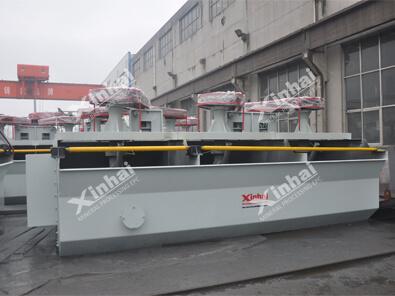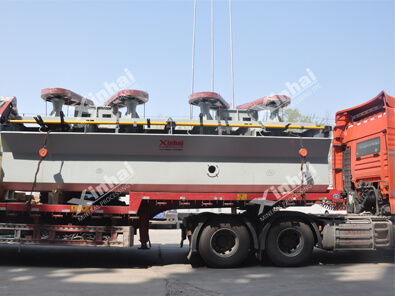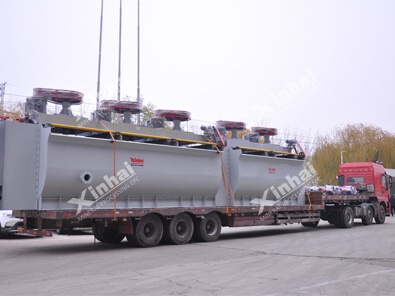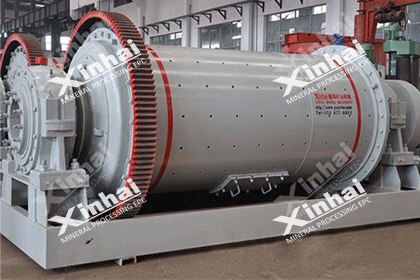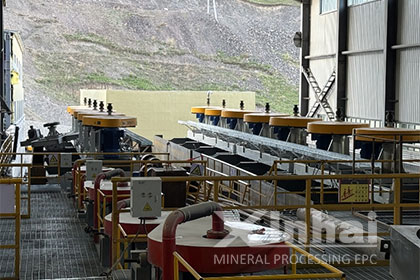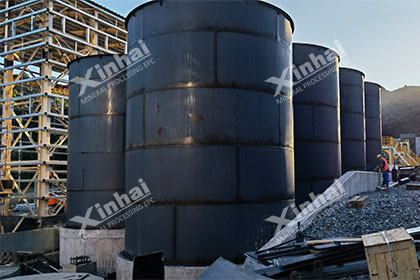4 Q&A about Lithium Ore Flotation Process You Need to Know
 Laura
Laura
 Jan 31, 2023
Jan 31, 2023
 773
773
If you want to know more details about equipment, solutions, etc, please click the button below for free consultation, or leave your requirements!

( Site of lithium mine )
01What is the Lithium Ore Flotation Process
BackLithium ore flotation method is mainly a beneficiation method that uses the different physical and chemical properties of lithium ore mineral surfaces to sort minerals.
The flotation process is characterized by the selective attachment of lithium ore to the air bubbles in the pulp and the subsequent floating to the surface of the pulp to achieve the separation of lithium ore from the vein.
Before flotation, the lithium ore is ground to a size that meets the requirements of flotation, so that the lithium ore basically achieves monomeric dissociation for sorting. And add flotation chemicals. During flotation, air is introduced into the pulp to form a large number of bubbles, so the particles that are not easily wetted by water, which are usually called hydrophobic minerals, adhere to the bubbles and float up to the surface of the pulp with the bubbles to form a mineralized froth layer. While the particles that are easily wetted by water, which are usually called hydrophilic minerals, cannot adhere to the bubbles and remain in the pulp. The mineralized foam is discharged to achieve the purpose of lithium ore sorting.
02What is the Type of Lithium Ore Flotation Process?
BackAmong the lithium ore flotation methods, lithium pyroxene is commonly used in positive flotation, reverse flotation and combined flotation methods.
1. Positive Flotation Method of Lithium Ore
Lithium ore positive flotation method is the process of preferential flotation of lithium concentrate, the finely ground lithium ore pulp is added to sodium hydroxide for agitation, scrubbing to remove surface debris. And then oleic acid and its soaps are used as a trapping agent to float the ore particles into the froth product in acidic media, after which lithium concentrate is obtained, and the concentrate is further processed to be prepared as lithium carbonate used in batteries. And the finely ground minerals are added to a strong alkaline media, a high concentration of strong agitation operation. Through the sodium hydroxide treatment of high concentrations of the pulp, so that the pulp in the alkaline action off, and after several scrubbing and de-sludging, the addition of fatty acids or soap trapping agent directly flotation of lithium pyroxene. As the added sodium hydroxide reacts with the silicate type vein minerals in the pulp and generates sodium silicate (water glass) inhibitor, the sulfur dioxide (SiO2) leached from its lithium pyroxene surface is activated. While the vein minerals are inhibited by the activation cations (iron, calcium, copper, etc.) on their surface to make them generate insoluble compounds, thus achieving flotation of lithium pyroxene.
2. Reverse Flotation Method of Lithium Ore
Lithium ore reverse flotation method refers to the fine grinding of lithium ore pulp in the alkaline medium adjusted by lime, adding dextrin, starch-type adjusting agent to inhibit lithium concentrate. And then use cationic trapping agent to float out the silicate type of vein minerals in the selection method, reverse flotation method, the product left in the tank is lithium pyroxene concentrate. In the reverse flotation method, the product left in the tank is lithium pyroxene concentrate, mainly using lime, starch and dextrin as inhibitors and pine alcohol oil as frothing agent. Under the condition of alkaline medium (pH 10.5~11.0), dextrin can effectively inhibit lithium pyroxene, and then amine cationic trap is used to trap silicate type vein minerals such as quartz, feldspar and mica to realize the reverse flotation.
3. Combined Flotation Method of Lithium Ore
If a single lithium ore flotation method is difficult to get qualified lithium pyroxene concentrate from the poor, fine, miscellaneous lithium pyroxene, it is necessary to use the joint flotation method, currently commonly used flotation - magnetic separation method and flotation - magnetic separation - re-election method.
a. Flotation of lithium ore - magnetic separation method
Flotation of lithium ore - magnetic separation method is first to oxidized paraffin soap and naphthenic soap as a combination of trapping agent, NaOH as a pH adjuster, in the alkaline pulp using a coarse flotation process to obtain lithium pyroxene concentrate. nd then by strong magnetic separation for iron removal, in order to obtain a low iron content of lithium pyroxene concentrate.
b. Flotation of lithium ore-magnetic separation-reconcentration method
After the material is slurry adjusted, it enters the re-election stage (removing tantalum, niobium and other products), and the re-election tailings are concentrated and deslimed by the thickener. And then slurry adjusted by adding oleic acid and oxidized paraffin soap to flotation of lithium pyroxene concentrate in high alkalinity conditions, and then further purified by strong magnetic separation to remove iron impurities.
03What is the Advantage of Lithium Ore Flotation Process?
Back1. The lithium ore flotation method is suitable for treating lithium ores with low grade and fine embedding.
2. The lithium ore flotation method is suitable for treating lithium ores with complex polymetallic co-occurrence, which can be recovered and enriched into multiple product concentrates separately.
3. The lithium ore flotation method can further treat the lithium ore crude concentrate, medium ore or tailings obtained by other beneficiation methods.
4. The lithium ore flotation method has a wide range of applications and high sorting efficiency.
04What are Flotation Chemicals Used in the Lithium Ore Flotation Process?
Back1. Flotation Chemicals - Trapping Agent
Lithium ore flotation method trapping agent lithium pyroxene flotation trapping agent mainly includes the use of a single trapping agent and a combination of trapping agent. Single trapping agent can be divided into cationic trapping agent used in reverse flotation and anionic trapping agent used in positive flotation.
Cationic trapping agent is generally amine trapping agent, dodecylamine is the more commonly used trapping agent, mainly used in roughing operations for reverse flotation of quartz, mica and other vein minerals.
Anionic trapping agent is generally fatty acids and their soaps trapping agent, including oleic acid, sodium oleate, naphthenic soap, oxidized paraffin soap, etc..
Lithium pyroxene combination of trapping agents can play a variety of synergistic effect of agents to obtain the ideal flotation hair capacity indicators, common combination of trapping agents include sodium oleate + oxidized paraffinic soap, oleic acid + naphthenic acid + fuel oil, oxidized paraffinic soap + oxime acid, oxidized paraffinic soap + naphthenic soap and so on.
In addition to the above commonly used trapping agents, there are also a large number of new trapping agents for lithium pyroxene flotation, such as YOA-15, YZB-17, and other chelating trapping agents.
2. Flotation Chemicals - Adjusting Agent
Adjusting agent for lithium ore flotation method As the floatability of lithium pyroxene and vein minerals are similar in pegmatitic lithium pyroxene, the difference in floatability between lithium pyroxene and vein minerals needs to be enlarged by adding adjusting agent.
The adjusting agent for lithium pyroxene flotation is mainly "tri-alkali", including sodium carbonate, sodium hydroxide and sodium sulfide. In addition, there are also new inhibitors such as disodium EDTA.
05Summary
BackThe above is the introduction of lithium ore flotation method, in addition, can effectively recover lithium ore methods include: hand sorting, re-election, magnetic separation and thermal cracking method, etc.. However, in the actual beneficiation plant, the beneficiation process of lithium ore should be based on the nature of the ore. It is recommended to carry out beneficiation tests first, and customize the suitable beneficiation process scientifically and rationally according to the test results, in order to avoid the waste of resources caused by inappropriate beneficiation process.
 +86 182 3440 3483
+86 182 3440 3483 yanzhang19990421@gmail.com
yanzhang19990421@gmail.com




 Message
Message Chat Now
Chat Now


